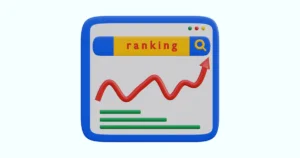Learn why digital marketing has revolutionized the advertising landscape and how it outperforms traditional marketing strategies. Here’s a comparison between traditional and digital marketing:
Comparison
| Feature | Traditional Marketing | Digital Marketing |
| 1. Reach and Targeting | Traditional marketing methods include print advertisements, television and radio commercials, billboards, direct mail, and more. These methods typically have a broad reach but may not offer precise targeting options. | Digital Marketing involves online channels such as websites, search engines, social media platforms, email marketing, and more. It provides the ability to reach a global audience and offers advanced targeting options to reach specific demographics, interests, and behaviors. |
| 2. Cost | Traditional marketing methods often require significant investments. Costs can include printing materials, TV airtime, radio spots, and physical distribution. These expenses can be high, especially for small businesses. | It can be more cost-effective, especially for smaller businesses. It offers a range of budget-friendly options, such as social media advertising, email marketing, and search engine optimization. Digital campaigns can be tailored to fit various budgets. |
| 3. Measurability and Analytics | Traditional marketing efforts can be challenging to measure accurately. It’s often difficult to track the direct impact of traditional advertisements on customer behavior or conversions. | It provides extensive data and analytics tools that allow businesses to track and measure various metrics. You can measure website traffic, ad impressions, click-through rates, conversion rates, and more. This data helps businesses evaluate the success of their campaigns and make data-driven decisions. |
| 4. Interactivity and Engagement | Traditional marketing methods are generally passive and offer limited interactivity. Consumers typically receive the message without the ability to engage directly with the brand or provide immediate feedback. | It allows for greater interactivity and engagement. Customers can actively participate through comments, shares, likes, reviews, and direct messaging. This engagement helps build relationships, increase brand loyalty, and gather valuable feedback. |
| 5. Flexibility and Personalization | Traditional marketing campaigns often have limited flexibility once launched. It can be challenging to modify or customize materials once they are produced and distributed. | Digital marketing offers flexibility and the ability to make real-time changes. Campaigns can be modified quickly, allowing businesses to optimize their strategies based on audience response. Personalization is also possible, as digital platforms enable targeting specific individuals with personalized messages. |
Conclusion
Both traditional and digital marketing have their merits and can be effective depending on the goals, target audience, and industry of a business. Often, a combination of both approaches can yield the best results, leveraging the strengths of each to create a comprehensive marketing strategy.
Also read, Why My Business Needs a Website?

